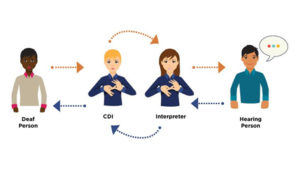An automatic sewing machine can be used for stitching and is generally controlled via foot pedal. Furthermore, sensor control may also be possible. Know more about the best embroidery machine for beginners.
This moderately priced option is an ideal starting machine for beginners, offering 70 different stitches and a one-step buttonhole function. Our analysts found it worked well with most fabrics; it struggled somewhat when sewing silk chiffon.
Stitch Selection
Stitch selection on an automatic sewing machine offers many choices to select the optimal stitch, length and width settings for you project. Brother offers this model with a 5-inch color touchscreen to easily select, optimize and change length and width settings of stitch. Furthermore, its dual feed ensures fabric is fed from both above and below evenly for reduced puckering and ensured flawless projects.
Consider your preference of front-loading or top-loading bobbin. A front-loading bobbin requires more steps for setup but can help keep track of thread usage more easily, decreasing chances of running out during an active project.
Computerized machines provide more automated features than mechanical ones, including embroidering digital files or adjusting stitch length to within millimeters. Unfortunately, this technology comes at a greater price point and demands additional work from you.
Needle Threading
If you find threading by hand to be difficult, an automatic machine needle threader makes the task significantly simpler. Equipped with a wire hook on one end to catch and guide thread through the needle’s eye, this device makes threading much simpler. Before purchasing one for your sewing machine, be sure to read its user manual; instructions vary between models; incorrect threaders could damage both machine and thread.
To use the needle threader effectively, first remove the presser foot from your sewing machine to give yourself maximum space to work and prevent anyone from starting up your machine by accident when fiddling with needle eyes. Also remember to dim down or turn off your workspace light in order to reduce accidental machine starts which could ruin projects or harm you personally. Next snip your thread at an angle in order to reduce fuzz or fraying that could make thread passage through needle eye more difficult.
Threading the Bobbin
The bobbin thread must also be carefully and evenly wound for proper stitch formation. Consult your sewing machine’s manual on how to do this.
Start by raising the presser foot lever and taking both threads up by several inches – this will keep them out of your way when removing the bobbin case cover.
Follow these steps to thread your machine correctly: 1. Adjust thread tension 2. Align thread 3 with guide number 3, and three to five on your machine 3. 4. Install your bobbin into its case while making sure its horn (the protruding metal piece on its end) sits perfectly within its race within the case race 5. Once your bobbin is in its place, close its compartment cover.
Your machine’s bobbin case may include a spool cap that you can remove or leave in place for added stability – now it’s time to sew!
Maintenance
Sewing machine maintenance entails various steps designed to maintain peak performance and quality. This may involve cleaning, oiling, threading correctly and performing tension spring checks on take-up springs as well as checking bobbin case springs.
After each use, a basic sewing machine should be thoroughly cleaned to remove lint and dust build-up. A vacuum cleaner is the preferred method; however, an air can can also work, provided you blow the lint away from the machine rather than into it!
Maintaining your machine regularly with oil, especially after engaging in heavy sewing, will help extend its life and avoid mechanical issues. Sewing machine oil can be found at fabric stores or the dealer where you bought the machine and you should carefully read and follow any instructions provided with the user manual that come with your machine to ensure its best possible operation.



Recent Comments